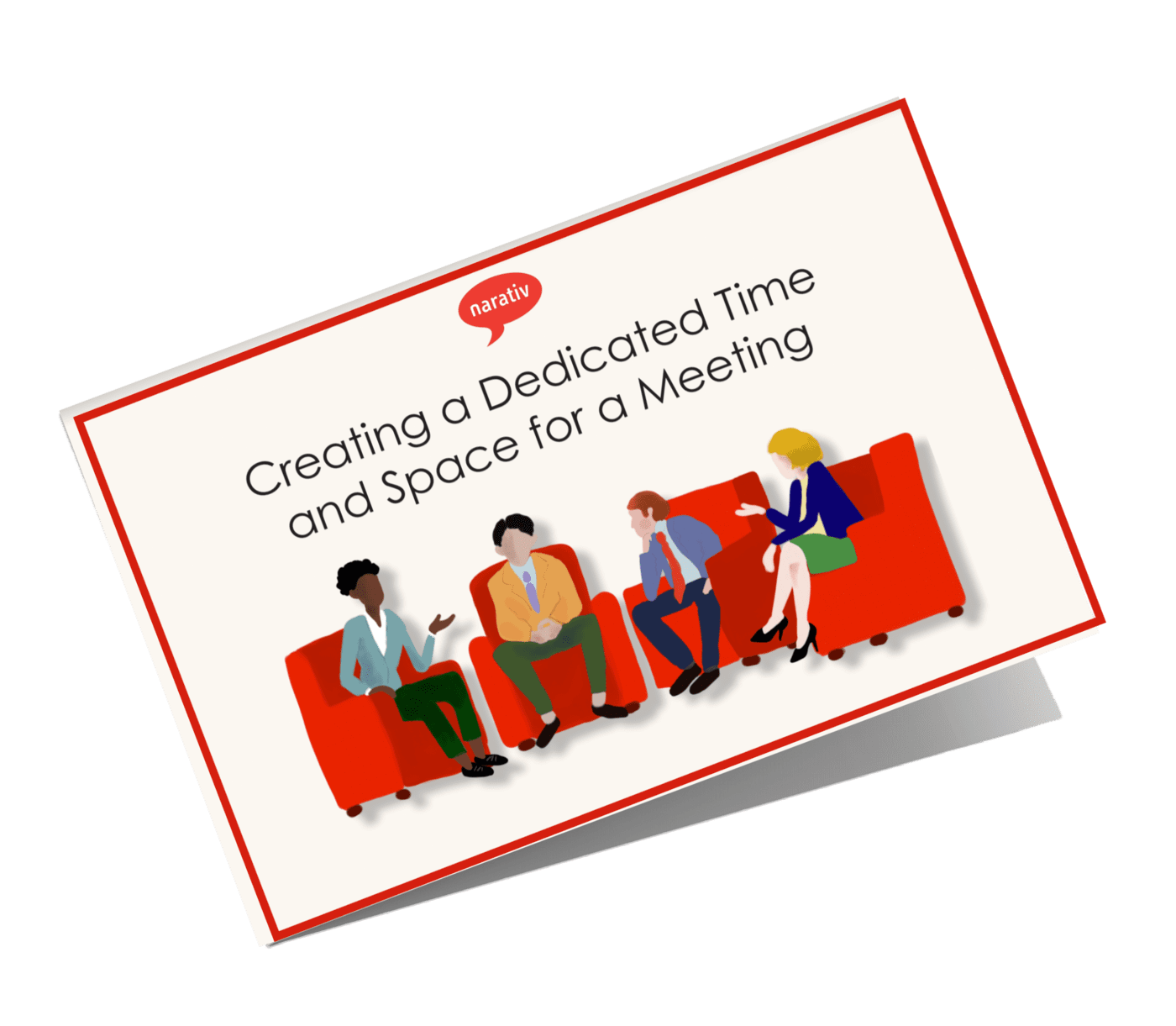We’ve talked before about the vital role that listening plays in any conversation. In fact, listening is one of the main pillars of just about everything we teach at Narativ.
There is an undeniable reciprocal relationship between listening and telling that can’t be ignored if you want to tell a meaningful story or make genuine connections in your discussions. And, as long as you’re heeding our advice and practicing your listening skills, consider taking some time to get familiar with silence as well. That isn’t us politely telling you to hold your tongue (though that’s another skill everyone should develop), but rather to start becoming more aware of the value of pauses in your conversations.
As an illustration of how this works, consider music. Music is all about communicating feelings through sound, but the best songs are not just a wall of sound. The most powerful compositions emphasize the pauses (or rests) as much, if not more, than the notes being played. Silence is similarly important in verbal communication, and once you learn why that is and start applying it to your own speech, you’ll find it makes a world of difference.
So hush for a moment and let’s talk about how developing a greater respect for pauses can completely transform your communication.
Dialogue that Breathes Inspires Connection
A common stumbling block for many people is that they treat the time during a conversation when the other person is talking as the time to plan what they are going to say next—simply biding their time before they begin speaking again. More often than not, this period of planning means you end up not fully listening to what the other person is saying. You’re only listening as a means to draft your counterpoint or tell your own related anecdote.
Imagine how much richer your discussions could be if you saved your plotting for the pause and instead listened fully to what was being said while it was being said and before crafting a response to it. That sort of listening leaves room for dialogue that gives you a chance to take in new information, allowing your own thoughts and opinions to be influenced by what is said and evolve in a way that fosters a lot more connection.
Growth only happens through reflection, so why not make reflection a part of your conversations by taking advantage of the pauses to consider how what was said changes your own thoughts and opinions? 99.9% of the time, no harm can come from spending a little extra time thinking before you speak.
Listening Between the Lines Deepens Understanding
While it is very important for you to learn to press the pause button on yourself, there is also a lot of value to be found in listening to the pauses of the person you’re speaking with as well. It’s easy to forget that verbal communication isn’t the only way for points to be communicated in a conversation. There is often just as much to be gained from taking note of what is being conveyed silently.
Let’s bring this back around to what we said before about music. There is a lot of emotion and meaning communicated in the silences between notes; sometimes perhaps even more than what is communicated in the notes themselves. You can use this same principle when you are listening to another person speak.
Take note of where the other person pauses and consider how it changes the weight of the words they’re saying. And while you’re doing that, pay attention to other nonverbal cues that might indicate how they feel about what they are saying—their emphasis on certain words, their tone of voice, their gestures and expressions. All of these are important to notice so you can grasp a deeper understanding and feel greater empathy for what is being said.
Gaps Between Phrases Build Bridges of Trust
Columbia University conducted a study in 2006 that showed that pauses in speech tend to indicate that the speaker is being truthful, whereas deceptive speech tends to have fewer gaps. Whether we realize it on a conscious level or not, we all have a certain degree of intuition when it comes to determining who to trust and it turns out that speaking cadence—pausing versus continuously speaking—is one of the elements that factors into this.
Speaking of trust, the practice of pausing takes your own trustworthiness a step further too. Regardless of your motives in a conversation, any model of speech that requires sticking firmly to your original opinion from start to finish can be a pretty disingenuous way to communicate. It’s far better to slow down, empty your cup (so to speak), and respond in the present moment once you have taken in new information from listening to the other person’s points with empathy and a willingness to be wrong. There is humility and vulnerability in this which often leads to greater connection and…trust.
Learning to Love Silence
The more you pay attention to the pauses in conversations—especially as you strive to include more of them in your dialogue—the more comfortable you will likely become with silence in general. We tend to attribute silence with awkwardness, but once you are able to break free of that notion, you will discover far deeper dimensions of understanding and communication than you were aware of before.
As you begin to practice more frequent and longer pauses, it is common to find your conversation partners start taking cues from you and also become more comfortable themselves. As a result, your dialogue will start to involve a lot more listening and a lot more reflection—which, in turn, will make for easier connection, greater empathy, and deeper trust. In the end, it’s more about what you don’t say than what you do.
To hear more about the power of the pause, tune in to this episode of the StoryTalks podcast. To learn to better apply this principle and improve your communication through storytelling, schedule a complimentary 15 minute consult with our CEO, Jerome Deroy.




